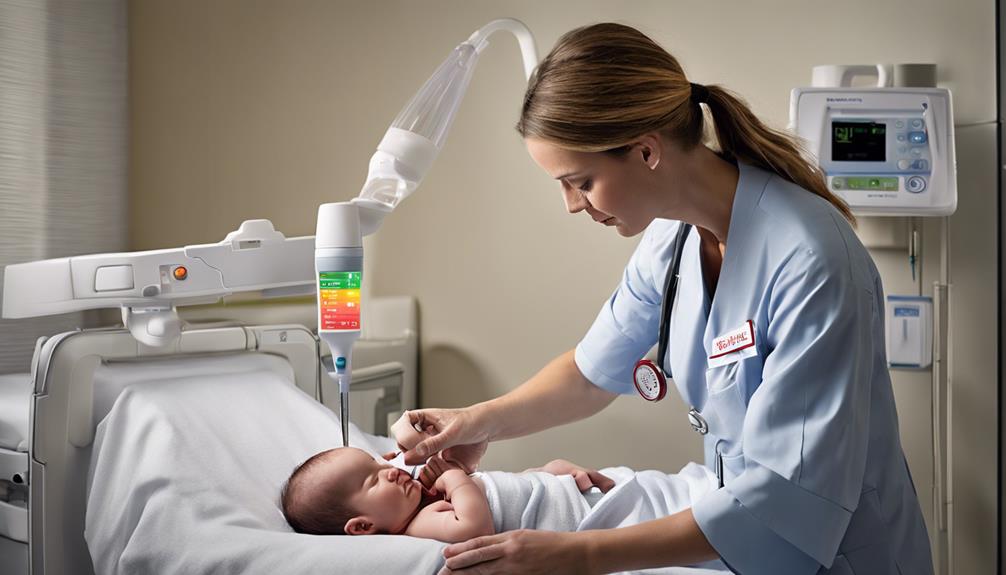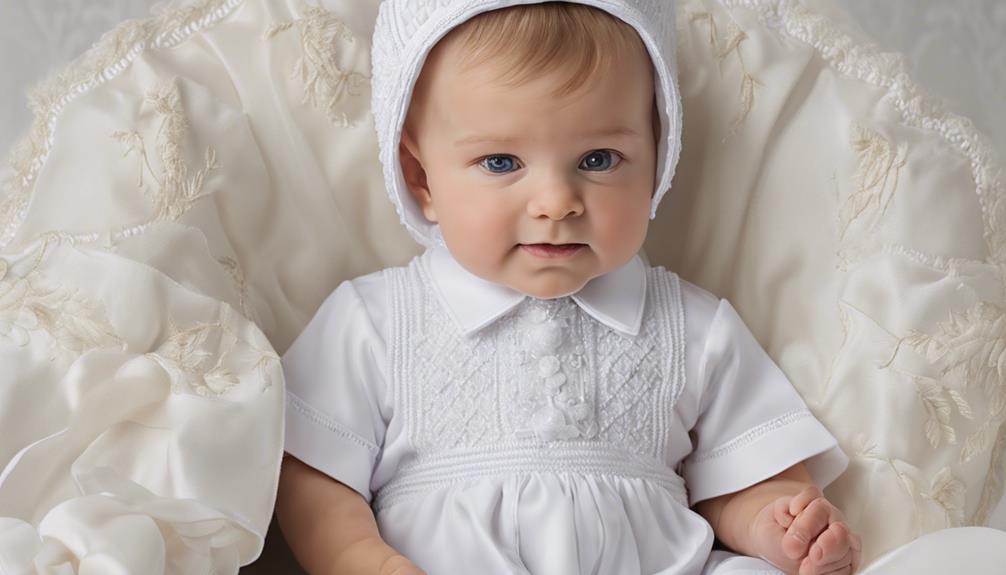In thinking about the complexities involved in creating a care plan for newborn thermoregulation, it’s natural at first to wonder about the feasibility of applying such thorough procedures in a healthcare environment. Nevertheless, by dividing the strategy into simpler parts, medical professionals can adeptly handle the intricacies involved in maintaining the thermal comfort of newborns.
Understanding the nuances of temperature regulation in newborns is important, and our step-by-step guide offers a structured approach to address this critical aspect of neonatal care. From evaluating temperature needs to implementing control strategies, each stage plays an important role in ensuring the well-being of these vulnerable patients.
Key Takeaways
- Implement individualized heat loss reduction strategies for newborns.
- Regularly assess and document newborn temperature needs for proactive care.
- Develop a comprehensive care plan addressing key risk factors and monitoring protocols.
- Utilize effective temperature control strategies and monitor for optimal thermoregulation.
Importance of Newborn Thermoregulation
Maintaining the proper body temperature in newborns is a critical factor in ensuring their health and well-being. Newborn thermoregulation is a delicate balance, with a core body temperature between 36.5 – 37.5 degrees Celsius being essential to prevent complications like metabolic acidosis and hypoglycemia. Neonates are vulnerable to heat loss through convection, conduction, evaporation, and radiation, highlighting the importance of heat loss prevention in their care. Late Pre-term babies, with their increased risk factors and underdeveloped systems, require special attention to avoid hypothermia.
Thermal care strategies play an essential role in supporting newborns' thermoregulation needs. Techniques such as swaddling, skin-to-skin contact, and providing a warm environment help reduce heat loss and maintain a stable temperature. Effective thermal care involves personalized approaches tailored to each newborn, ensuring individual needs are met. By focusing on monitoring, immediate intervention, caregiver education, and collaboration with healthcare providers, neonatal nurses can implement best practices in newborn thermoregulation care, promoting the well-being of these vulnerable little ones.
Assessing Newborn Temperature Needs

Newborn temperature needs are evaluated by considering factors such as gestational age, weight, and environmental temperature, ensuring a thorough evaluation of the infant's thermoregulation requirements. When evaluating a newborn's temperature needs, we carefully consider various aspects to provide the best possible care:
- Use a thermometer to accurately measure the newborn's temperature and monitor for any signs of hypothermia or hyperthermia.
- Evaluate the newborn's skin color, activity level, and response to touch to determine their thermal status.
- Consider the newborn's clothing, blankets, and room temperature when evaluating their thermoregulation needs.
- Document temperature evaluations regularly to track trends and make sure appropriate interventions are implemented.
- Keep an eye out for any risks of heat loss in infants, taking proactive measures to prevent heat loss and maintain a normal body temperature.
Developing a Thermoregulation Care Plan
In developing a thorough thermoregulation care plan for newborns, it's important to identify key risk factors and incorporate targeted interventions to guarantee ideal temperature management. Factors such as prematurity, low birth weight, and congenital abnormalities can put infants at risk for issues with thermoregulation. Our nursing care plans should include strategies like skin-to-skin contact, proper clothing, and vigilant temperature monitoring to maintain a normal body temperature.
Setting protocols for temperature monitoring and establishing goals to keep core body temperature stable are vital components of the plan. Additionally, it's essential to address the use of gradual rewarming techniques to prevent hypothermia and hyperthermia effectively. By collaborating closely with the healthcare team, we can ensure consistent monitoring, assessment, and implementation of the thermoregulation care plan to prevent the loss of body heat and maintain the baby's temperature within the safe range.
Implementing Temperature Control Strategies

To guarantee the best care for newborns, our focus shifts to implementing effective temperature control strategies that play a vital role in maintaining the neonate's core body temperature within the recommended range of 36.5 – 37.5 degrees Celsius.
Utilizing radiant warmers and incubators with skin temperature monitoring ensures the neonate's temperature stays within normal limits. Humidity control in the incubator is essential to prevent heat loss through insensible water loss and maintain a stable thermal environment.
Adhering to dressing protocols and regularly monitoring and adjusting temperature settings are crucial components of successful temperature management techniques. Providing proper respiratory support and monitoring during phototherapy sessions are essential for optimal thermal care for newborns.
Monitoring and Adjusting Care Plan
Regular monitoring and adjustment of the care plan are essential components in ensuring the newborn's temperature remains stable within the ideal range. We must diligently observe the newborn's skin temperature, vital signs, and responses to interventions to address any fluctuations promptly. In the neonatal intensive-care unit, where thermoregulation is essential, nursing interventions play a crucial role in maintaining the infant's thermal stability. By understanding thermoregulation and heat loss mechanisms, we can implement appropriate measures such as utilizing open incubator portholes or adjusting the ambient temperature to support the newborn's well-being. Additionally, monitoring metabolic processes that influence heat production is key for a comprehensive care plan. Below is a table highlighting key aspects of monitoring and adjusting the care plan effectively:
| Key Aspect | Importance |
|---|---|
| Regular Temperature Monitoring | Ensures newborn remains within optimal range |
| Clinical Assessment Findings | Guides adjustments in care plan |
| Collaboration with Team | Ensures holistic approach to care plan |
Frequently Asked Questions
What Are the Guidelines for Thermoregulation of Newborns?
Maintaining a newborn's core body temperature between 36.5 – 37.5 degrees Celsius is important to prevent complications. Loss of heat occurs through various means, making a warm environment essential. Late Pre-term babies need extra care. Resuscitation involves warmth, dryness, and proper clothing.
What Nursing Interventions Are Essential to Ensure Adequate Thermoregulation in the Newborn?
Ensuring adequate thermoregulation in newborns involves implementing skin-to-skin contact, monitoring room temperature, using warmers, appropriate clothing, and educating parents. These interventions are crucial for maintaining the newborn's body temperature and overall well-being.
What Is the First Step for Thermal Protection of Newborn?
Assess environmental temperature first to protect a newborn from thermal stress. Check their skin temp, adjust clothing or blankets, provide skin-to-skin contact, and consider radiant warmers or incubators. Educate parents on safe practices for ongoing thermal care.
What Are the 5 Steps of Newborn Care?
First and foremost, the 5 steps of newborn care encompass assessment, monitoring, intervention, education, and evaluation. These essential components secure the well-being of the newborn by addressing temperature, skin color, activity, and overall health.
Conclusion
As we navigate the delicate balance of newborn thermoregulation, we must remain vigilant in our assessments and proactive in our interventions.
By embracing the complexity of temperature control strategies while staying grounded in compassion for our tiny patients, we can guarantee their well-being and health outcomes.
Let's continue to monitor and adjust our care plans with precision and care, always aiming for excellence in newborn thermal care.









